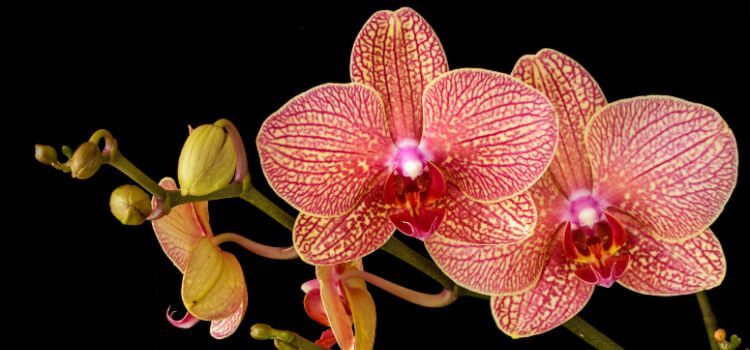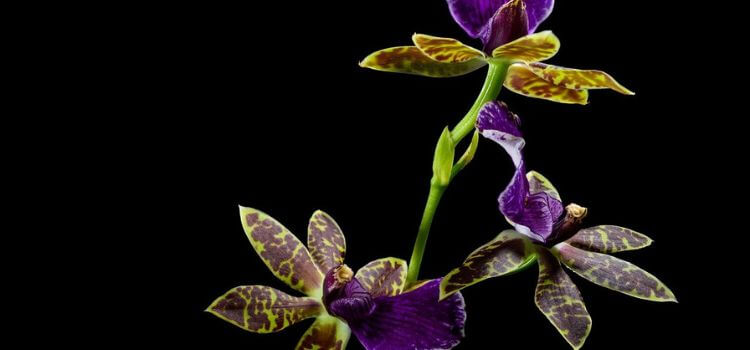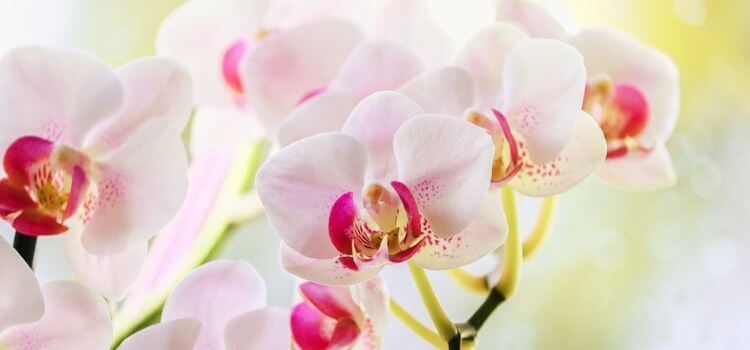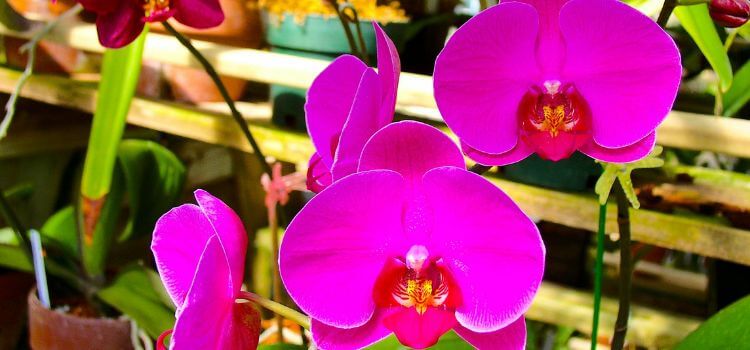As an Amazon Associate, I earn from qualifying purchases.
Grow orchids without soil using a hydroponic system or mounting them on bark or cork. These methods mimic their natural habitat.
Orchids are epiphytic plants that grow on other surfaces rather than in soil. Growing orchids without soil can be achieved through hydroponics or by mounting them on materials like bark or cork. These methods allow the roots to access air and moisture, resembling their natural environment.
What Are Orchids?
Orchids are stunning flowers that captivate many with their beauty. Growing orchids without soil is a fascinating method that many gardeners are adopting. This blog post will guide you on how to achieve this unique approach. But first, let’s understand what orchids are.
Orchids belong to the Orchidaceae family, a large family of flowering plants known for their vibrant colours and intricate shapes. They grow in various climates, from tropical rainforests to arid deserts.
Orchids are unique because of their symmetrical flowers. They have three petals and three sepals. The middle petal often forms a lip, which is distinct and eye-catching and helps attract pollinators.
Common Types Of Orchids
There are many types of orchids. Here are some of the most common:
- Phalaenopsis: Also known as the moth orchid, it is famous for its long-lasting flowers.
- Cattleya: Known for its extensive and fragrant blooms, it is often used in corsages.
- Dendrobium: These orchids have small, delicate flowers and grow well in various conditions.
- Vanda: Known for their vivid colours and large blooms, they require high humidity.
Unique Features Of Orchids
Orchids have some unique features that set them apart:
| Feature | Description |
|---|---|
| Symmetry | Orchids have bilaterally symmetrical flowers, meaning they can be divided into two halves. |
| Lip Petal | The lip petal is often elaborate and helps in pollination. |
| Pollinia | Orchids produce pollen in a mass called pollinia, which sticks to pollinators. |

Orchid Growing Conditions
Orchids thrive in specific conditions. Here are some key factors:
- Light: Orchids need bright, indirect light.
- Temperature: They prefer a warm environment, typically between 60-80°F.
- Humidity: High humidity is crucial, around 50-70%.
- Air Circulation: Good air circulation prevents diseases.
Benefits Of Growing Orchids Without Soil
Growing orchids without soil offers many benefits:
- Less Maintenance: No need to worry about soil-borne pests.
- Better Airflow: Roots get more oxygen, promoting healthier growth.
- Reduced Root Rot: Minimizes the risk of overwatering and root rot.
Comparison Of Growing Methods:
| Aspect | With Soil | Without Soil |
|---|---|---|
| Risk of Disease | High | Low |
| Aeration | Poor | Excellent |
| Nutrient Control | Limited | Precise |
| Weight | Heavy | Light |
| Eco-Friendly | No | Yes |
| Cleanliness | Messy | Tidy |
Why Grow Orchids Without Soil?
Growing orchids without soil is a fascinating method that intrigues many gardening enthusiasts. Orchids are unique and beautiful plants that can thrive without traditional soil. But why grow orchids without soil? There are several compelling reasons to consider this alternative method, which can enhance your gardening experience and the health of your orchids.
Healthier Root Systems
Growing orchids without soil allows for better airflow around the roots. This helps prevent root rot, a common issue in traditional soil-based growing. The roots can breathe, leading to a healthier plant.
Better Moisture Control
Without soil, you have greater control over moisture levels. This helps prevent overwatering and underwatering. Orchids prefer a specific moisture balance, and controlling this can lead to a more robust plant.
Reduced Pest Issues
Soil often harbours pests and diseases that can harm orchids. Growing them without soil reduces the risk of pests and keeps your plants healthier. This method is especially beneficial for indoor gardening.
Improved Nutrient Uptake
Orchids grown without soil can absorb nutrients more efficiently. You can provide nutrients directly to the roots through water or a nutrient solution, ensuring the plant gets precisely its needs.
Eco-friendly Option
Growing orchids without soil is an eco-friendly gardening method. It reduces the need for soil, which can be a limited resource, and minimizes the use of chemicals and pesticides.
Flexible Growing Environments
Without soil, you can grow orchids in varied environments. Mount them on bark, place them in water culture, or use hydroponic systems. This flexibility allows for creative and space-saving gardening solutions.
Enhanced Aesthetic Appeal
Growing orchids without soil often leads to visually stunning displays. The exposed roots and unique setups can become a beautiful part of your home decor, and this method also highlights the natural beauty of the orchids.

Different Ways To Grow Orchids Without Soil
Orchids are beautiful and unfamiliar plants that can thrive without soil. Growing orchids without soil might seem strange, but it is quite possible. Various methods are available to grow these stunning plants without traditional soil. This post will explore different ways to grow orchids without soil.
Water Culture Method
The Water Culture Method involves growing orchids directly in water. This method is straightforward and consists of suspending the orchid roots in water. Here are the steps:
- Choose a clear container.
- Fill the container with water, ensuring the roots are submerged.
- Change the water every week to prevent mould and algae.
Water culture is excellent for orchids because it ensures constant moisture. However, it is essential to monitor for root rot. The following table summarizes the pros and cons:
Pros
- Constant moisture
- Easy to set up
Cons
- Risk of root rot
- Needs frequent water changes
Sphagnum Moss Method
The Sphagnum Moss Method uses sphagnum moss to grow orchids. This method is popular because sphagnum moss retains moisture well, allowing air to reach the roots. Follow these steps:
- Soak the sphagnum moss in water.
- Gently squeeze out excess water.
- Wrap the orchid roots with the moist moss.
- Place the moss-wrapped roots in a well-ventilated pot.
Sphagnum moss provides an excellent balance of moisture and aeration. However, monitoring the moss for signs of drying out or becoming too wet is essential. Here are some key points:
- Retains moisture effectively.
- Allows good air circulation.
- Needs monitoring for moisture levels.
Semi-hydroponic Method
The Semi-Hydroponic Method uses inert materials like clay pebbles or LECA (Lightweight Expanded Clay Aggregate). These materials do not decompose and provide excellent aeration and moisture control. Here’s how to do it:
- Choose a pot with drainage holes.
- Fill the pot with clay pebbles or LECA.
- Place the orchid in the pot, ensuring the roots are covered.
- Water the pot, allowing excess water to drain out.
This method reduces the risk of root rot and provides stable moisture levels. Important considerations include:
| Advantages | Disadvantages |
|---|---|
| Reduces root rot risk | Requires specific materials |
| Stable moisture levels | Needs regular watering |
Preparing Orchids For Soilless Cultivation
Growing orchids without soil is an exciting venture for plant enthusiasts. This method, known as soilless cultivation, offers numerous benefits, including better aeration, easier pest control, and simplified watering. Preparing orchids for soilless cultivation involves several vital steps to ensure the health and growth of these delicate plants.
Choosing The Right Orchid Species
Not all orchid species thrive in a soilless environment. These orchids have evolved to absorb moisture and nutrients from the air and rain.
- Phalaenopsis (Moth Orchid) – Known for their stunning flowers and ease of care.
- Cattleya – Famous for their large, fragrant flowers.
- Dendrobium – Versatile and adaptable to various growing conditions.
These species are ideal for soilless cultivation due to their natural growing habits. They thrive in environments that mimic their native habitats, attaching to trees and absorbing nutrients from the air and rain.
Selecting The Right Container
Choosing the correct container is essential for soilless orchid cultivation. The container should provide excellent drainage and allow air to reach the roots.
- Slatted Baskets – These containers offer maximum aeration and drainage.
- Clear Plastic Pots – This allows you to monitor root health and moisture levels.
- Clay Pots with Holes – Offer good drainage and stability.
Clear plastic pots are trendy because they allow light to reach the roots, promoting healthy growth. Ensure the container has multiple drainage holes to prevent water from stagnating.

Preparing The Growing Medium
The growing medium for soilless orchids should mimic their natural epiphytic environment. Several options are available:
- Bark Chips – Provide good aeration and mimic tree bark.
- Sphagnum Moss – Retains moisture while allowing air to circulate.
- Coconut Husk – Sustainable and retains moisture well.
Mixing different mediums can offer the best of both worlds. For instance, combining bark chips and sphagnum moss can provide aeration and moisture retention.
Transplanting The Orchid
Transplanting orchids to a soilless medium requires careful handling to avoid damaging the roots.
- Remove the Orchid – Gently take the orchid out of its current pot.
- Clean the Roots – Rinse the roots with lukewarm water to remove old soil.
- Trim Dead Roots – Use sterilized scissors to remove dead or rotting roots.
- Place in New Container – Position the orchid in the new container, spreading the roots evenly.
- Add Growing Medium – Fill the container with your chosen growing medium, ensuring the roots are covered but not buried.
After transplanting, water the orchid lightly and place it in a location with indirect sunlight. Monitor the plant closely for signs of stress and adjust care as needed.
Caring For Orchids Without Soil
Orchids are beautiful and unfamiliar plants that can thrive without soil. Growing orchids without soil can be a rewarding experience. Caring for orchids without soil requires some specific steps to ensure they remain healthy and vibrant.
Providing Adequate Light
Orchids need the right amount of light to grow well. Light is crucial for orchid health. Without enough light, they won’t bloom.
Place orchids in a spot where they get bright, indirect light. Direct sunlight can burn the leaves. A north or east-facing window works best.
- Ensure the light is filtered, not direct.
- Use sheer curtains to diffuse the light.
- Rotate the plant every week for even light exposure.
If natural light is insufficient, consider using artificial lights. LED grow lights are a good option.
| Light Type | Intensity | Duration |
|---|---|---|
| Natural Light | Bright, indirect | 6-8 hours/day |
| Artificial Light | Moderate | 12-14 hours/day |
Maintaining Proper Humidity
Humidity is essential for orchids to thrive without soil. These plants love high humidity levels.
Keep the humidity between 50% and 70%. You can use a humidifier or place a water tray near the plants. Misting the leaves daily helps, too.
- Use a humidity tray filled with water and pebbles.
- Group plants together to increase humidity.
- Place the orchid in a room with a humidifier.
Monitor humidity levels with a hygrometer. Sudden drops in humidity can stress the plant.
| Humidity Level | Action Required |
|---|---|
| Below 50% | Use a humidifier or mist leaves |
| 50%-70% | Ideal range |
| Above 70% | Reduce humidity, improve air circulation |
Watering And Fertilizing
Orchids need regular watering, but avoid overwatering. Overwatering can cause root rot.
Water the orchids every 5-7 days. Use room temperature water. Ensure the roots dry out between waterings.
- Water in the morning to allow leaves to dry.
- Use a spray bottle for even watering.
- Check the roots for moisture before watering.
Fertilizing is also essential. Use a balanced orchid fertilizer once a month.
| Watering Frequency | Fertilizing Frequency |
|---|---|
| Every 5-7 days | Once a month |
| Check roots for moisture | Use balanced fertilizer |
Preventing Pests And Diseases
Preventing pests and diseases is essential for healthy orchids. Regularly inspect the plants for signs of trouble.
Common pests include aphids, spider mites, and mealybugs. Use insecticidal soap to treat infestations. Keep the plants clean by wiping leaves with a damp cloth.
- Inspect leaves and roots weekly.
- Isolate infected plants to prevent spread.
- Use natural predators like ladybugs for pest control.
Diseases such as root rot and fungal infections can also occur. To prevent these issues, ensure good air circulation.
| Common Pests | Treatment |
|---|---|
| Aphids | Insecticidal soap |
| Spider Mites | Neem oil |
| Mealybugs | Alcohol swabs |
By following these steps, you can keep your orchids healthy and beautiful without soil.

Frequently Asked Questions
Ground orchids cannot thrive in water alone; they require well-draining soil and should not be submerged or grown hydroponically.
Orchids can thrive without traditional soil and often grow on trees or in a bark-based potting mix. This method, known as epiphytic growth, allows them to absorb moisture and nutrients from the air and rain.
Orchids do not require traditional soil to grow. They thrive in loose, airy, bark-based mixtures that mimic their natural tree-perching habitats.
Yes, orchids can thrive in glass containers if they have proper ventilation and drainage to prevent root rot.
Conclusion
Growing orchids without soil can be an exciting journey. With the proper techniques and care, these stunning blooms will thrive. Remember to monitor water, light, and airflow. Embrace the challenge and enjoy the beauty of soilless orchid cultivation. Your efforts will surely blossom into success.

